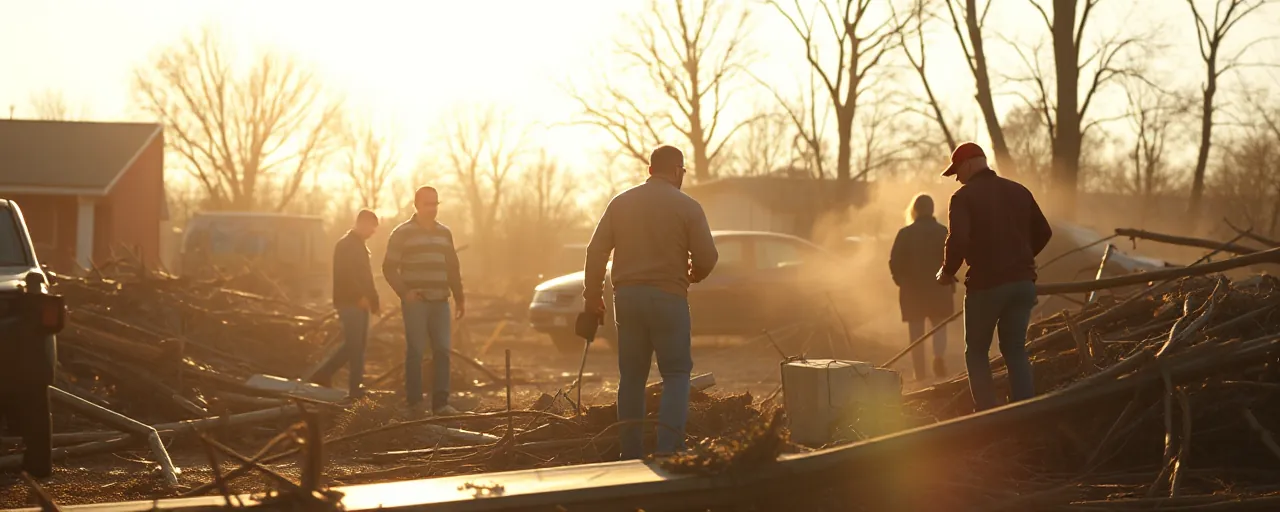A Call for Relief in Northeast Texas
In early April, tornadoes tore through Northeast Texas, leaving homes and businesses in Morris County and nearby areas battered. The storms, part of a broader wave of severe weather, disrupted lives and livelihoods, prompting Governor Greg Abbott to request a disaster declaration from the U.S. Small Business Administration (SBA). If approved, this declaration would unlock low-interest loans to help residents and business owners rebuild, offering a lifeline to communities grappling with the aftermath of nature’s wrath.
The request follows a detailed assessment by local, state, and federal officials, who confirmed that the damage in Morris County meets federal thresholds for SBA assistance. For many in the region, the storms were a stark reminder of nature’s unpredictability, with straight-line winds and thunderstorms compounding the destruction. The governor’s action reflects a broader effort to rally resources for recovery, but the path to rebuilding is rarely straightforward.
How Federal Aid Works
The SBA’s disaster loan program is a cornerstone of federal support for communities hit by natural disasters. It offers loans of up to $2 million for businesses to repair or replace damaged property, equipment, or inventory, with interest rates as low as 4% and terms stretching up to 30 years. Homeowners can borrow up to $500,000 for real estate repairs and $100,000 for personal property, while renters are also eligible. These loans can include extra funds for preventive measures, like storm shelters, to bolster future resilience.
Yet, accessing this aid is no small feat. The application process, often described as labyrinthine, requires detailed documentation of losses and financial need. After the 2025 Los Angeles wildfires, where federal aid surpassed $2 billion, many small business owners voiced frustration over delays and bureaucratic hurdles. Bipartisan efforts are underway to streamline applications across agencies, but for now, Texans awaiting approval of the SBA declaration face a waiting game, with recovery hanging in the balance.
The Economic Toll of Severe Weather
Tornadoes and other extreme weather events exact a heavy toll on local economies. In 2024, the U.S. saw 27 billion-dollar disasters, racking up $182.7 billion in damages and claiming 568 lives. Small businesses, the backbone of many communities, are especially vulnerable. Up to 90% fail within two years of a disaster, and 40% never reopen. In Morris County, the storms likely disrupted supply chains, reduced local spending, and strained already tight budgets.
The ripple effects extend beyond immediate losses. Employment often takes a hit, with job growth lagging for years in affected areas. Minority-owned businesses, which face higher rates of reported losses, are particularly hard-hit. Historical data suggests that while rebuilding can eventually boost local economies through insurance payouts and federal aid, the road to recovery is uneven, with some communities rebounding faster than others.
The Role of Self-Reporting
A key piece of Texas’s disaster response is self-reporting, where residents and businesses document their losses through online tools like the state’s iSTAT survey. These reports help officials gauge the scope of damage, prioritize aid, and build a case for federal assistance. Combined with aerial imagery and flood modeling, self-reported data paints a vivid picture of a disaster’s impact, enabling faster and more targeted responses.
But self-reporting has its limits. Participation is voluntary, and not everyone has the digital access or awareness to take part. This can skew data, potentially leaving some communities underrepresented in relief efforts. Still, the approach has proven vital in connecting people with resources, as seen in past disasters where community-driven reporting fostered trust and sped up recovery.
Navigating State and Federal Roles
Disaster response in the U.S. hinges on a delicate balance between local, state, and federal efforts. Local agencies act as first responders, while states coordinate resources and request federal aid when needed. The Federal Emergency Management Agency (FEMA) steps in to mobilize personnel and funding, but it doesn’t override state or local control. In Texas, the Division of Emergency Management has worked closely with local officials to assess damage and ensure eligibility for SBA loans.
Recent policy shifts, including a 2025 executive order, signal a push to give states more responsibility for disaster management. Supporters argue this empowers local leaders, but others warn that smaller states may struggle without robust federal backing. Communication challenges persist, despite tools like the National Incident Management System, raising questions about how well-prepared regions are for increasingly frequent disasters.
Tornadoes on the Rise
The storms that struck Morris County are part of a troubling trend. In 2024, the U.S. recorded 1,910 tornadoes, the highest in over a decade. By early April 2025, over 470 had already been reported, nearly double the historical average. These storms are increasingly clustered in intense outbreaks, with a notable shift toward the Southeast. Nighttime tornadoes, now deadlier than their daytime counterparts, add to the danger.
Improved radar and forecasting have saved lives, but economic losses remain staggering, with single events sometimes costing billions. As climate change alters weather patterns, experts stress the need for adaptive strategies, from stronger infrastructure to better early warning systems. For Northeast Texas, the latest storms underscore the urgency of preparing for a future where such events may become more common.
Looking Ahead
For the people of Morris County, the SBA’s decision on Texas’s disaster declaration will shape the pace of recovery. Low-interest loans could provide a critical boost, helping families repair homes and businesses regain footing. Yet, the broader challenges—bureaucratic delays, economic disruption, and uneven access to aid—highlight the complexity of rebuilding after disaster strikes.
As severe weather grows more frequent, communities across the U.S. face a shared question: how to balance immediate relief with long-term resilience. The answer lies in stronger coordination, smarter policies, and a commitment to ensuring no one is left behind when the winds die down and the work of recovery begins.
